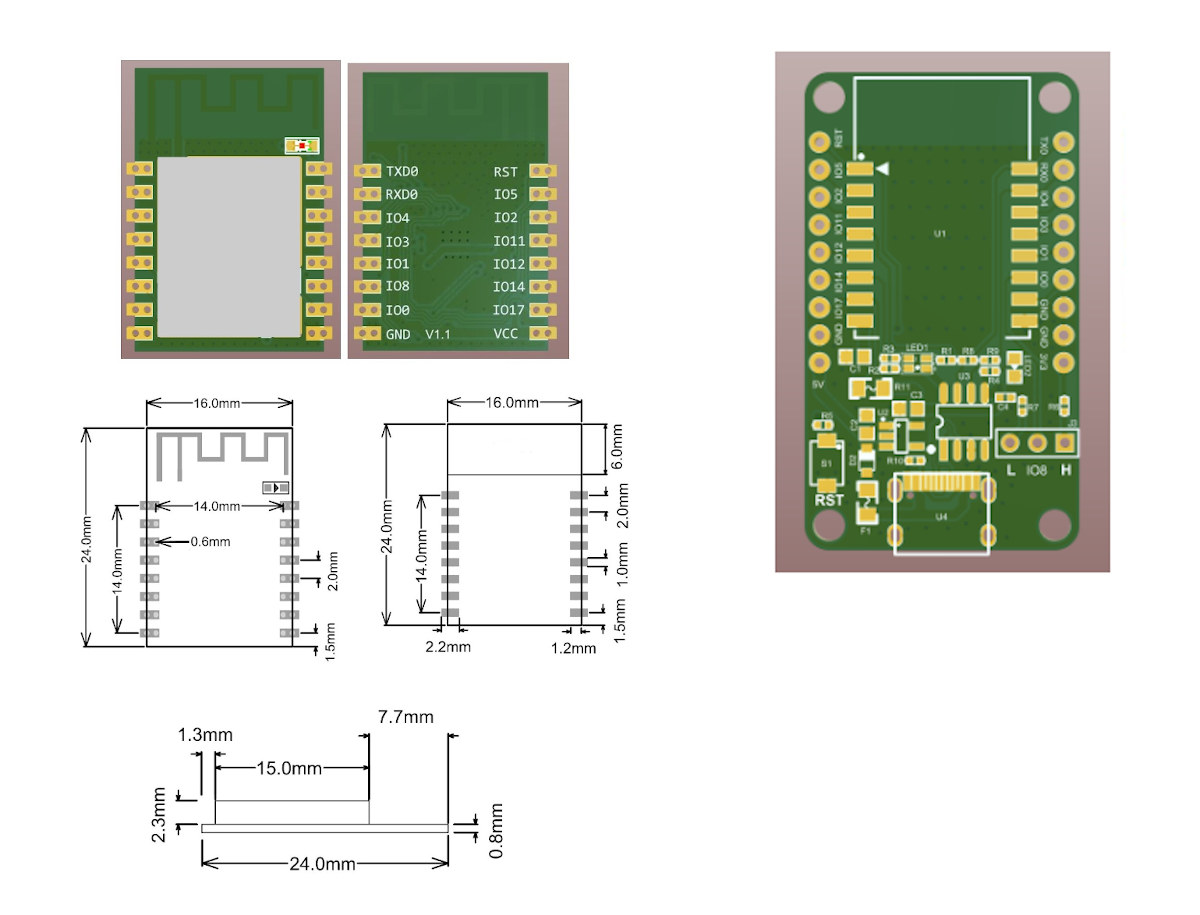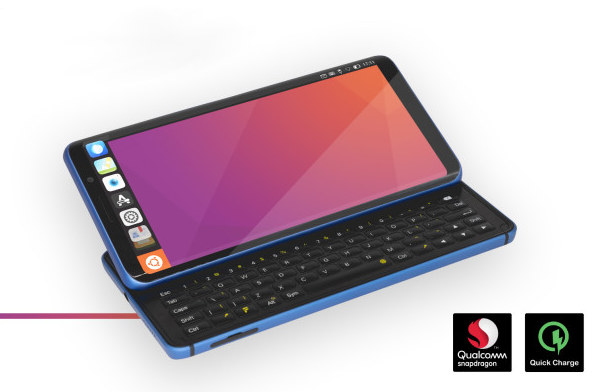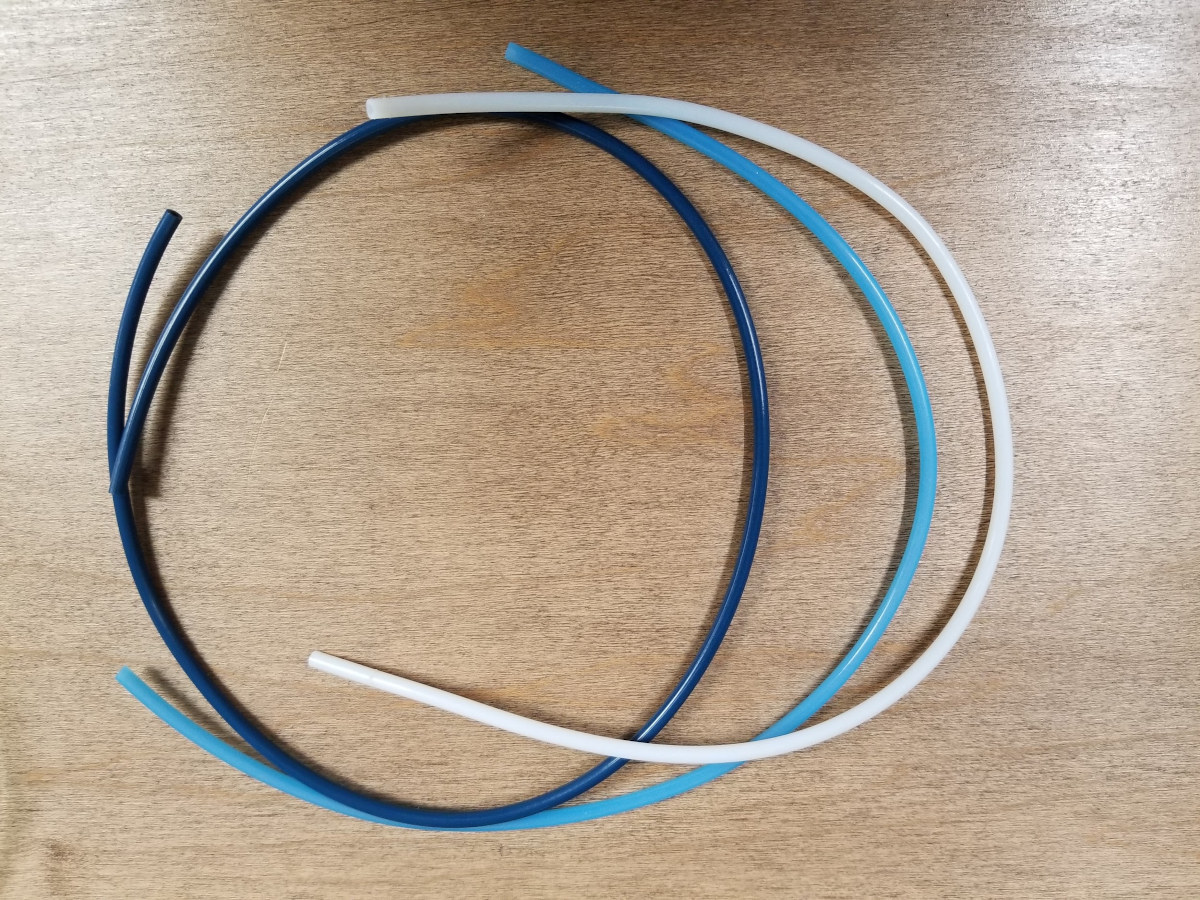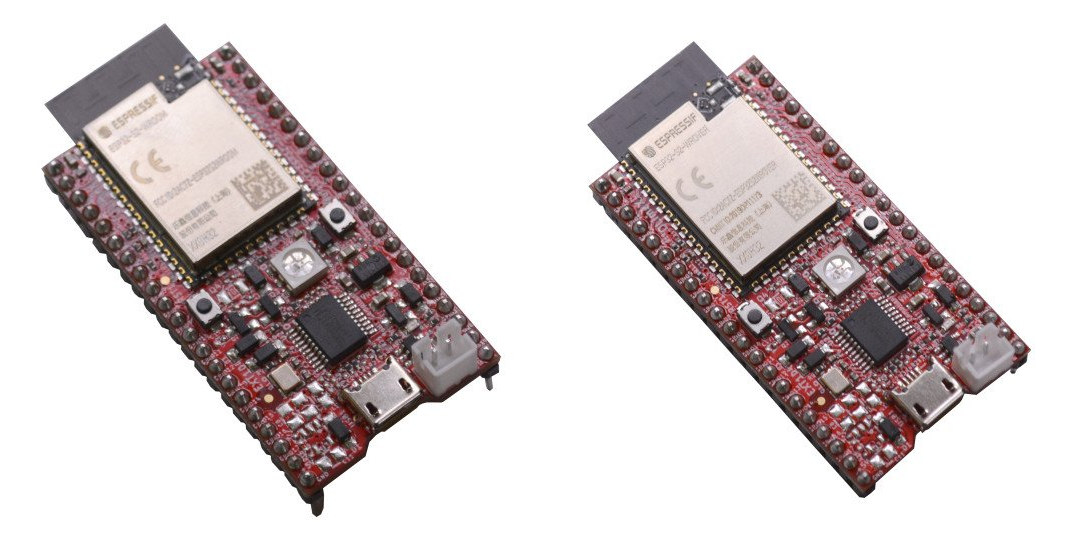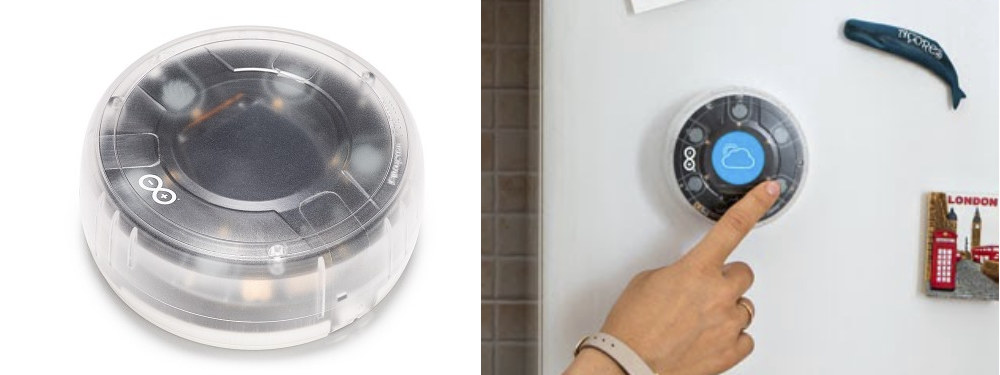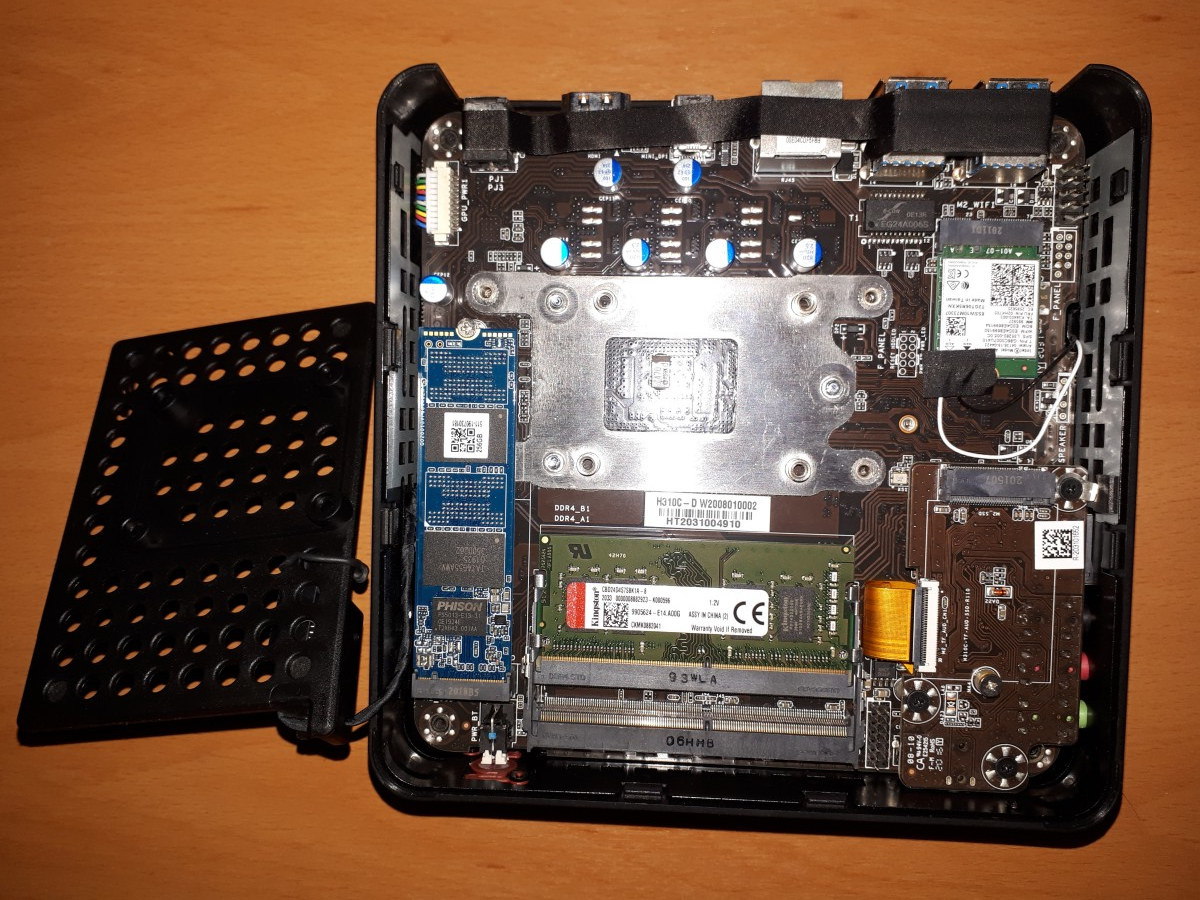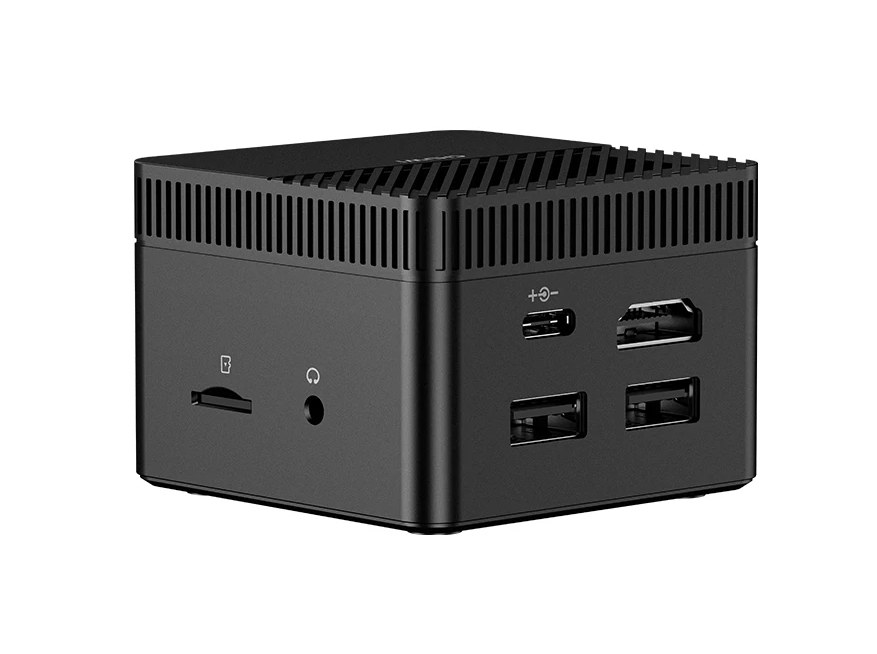A few years ago, we covered plenty of cheap Miracast adapters that plugged into your TV and used to mirror your Android or iOS smartphone display to a larger TV screen. It’s also possible to use Miracast on computers with WiFi, and since many TVs implement Miracast, extra hardware is often not needed. But in case your TV and computer are not compatible, Xiaomi Mijia Paipai wireless HDMI system [Update Nov 2020: actually called “Mi Wireless Casting Adapter” in English] solves this issue with a wireless HDMI receiver connected to your TV and a wireless HDMI transmitter connected to a USB port from your computer or laptop. Both the receiver and transmitter have similar dimensions (149.6 x 61 x 12.5 mm vs 152 x 60 x 11.9 mm) and weigh 38.5 grams in a form factor similar to Google Chromecast. The company says Windows 7 to 10 and Mac OS […]
The quest for a blob-free WiFi & Bluetooth stack for BL602 WiSoC
I thought I was done writing about Bouffalo Lab BL602 WiFI & Bluetooth RISC-V SoC for a while after first covering the chip itself, and then an inexpensive BL602 development board this weekend. But the BL602 SDK has shown up in various Github repositories, including Bouffalo Lab’s own bl_iot_sdk repository, and as more people are looking into it, there’s now an effort to develop a fully open-source blob-free WiFi & Bluetooth stack for BL602, and other Bouffalo Lab WiFi and/or Bluetooth wireless chips. Last day we communicate with Bouffalolab, finally they release the SDK of BL602 (RV32 chip of wifi+bt), all code is open, except libblecontroller.a, libatcmd.a, libbl602_wifi.a (while they have all symbol inside)https://t.co/giHsQ4ezXxwe have a fork too https://t.co/FiaAIxLBc8 — Sipeed (@SipeedIO) October 27, 2020 First, Sipeed says the code is mostly open-source except for three libraries: ibblecontroller.a, libatcmd.a, libbl602_wifi.a, all of which are un-obfuscated, and easy to disassemble. Then […]
F(x)tec Pro1 X smartphone runs LineageOS or Ubuntu, features a sliding keyboard (Crowdfunding)
F(x)tec Pro1 Android smartphone was introduced last year with the main differentiating features being its sliding keyboard. The company also mentioned support for Android-based LineageOS as well as Sailfish OS, but those need(ed) to be installed by the user. FX Technology has now unveiled F(x)tec Pro1 X smartphone with similar specs, except for the blue case and the option of having additional memory and storage, as well as official support for LineageOS and Ubuntu Touch thanks to a collaboration with XDA. Another difference is the availability of Scandinavian and AZERTY keyboard layouts F(x)tec Pro1 X specifications: SoC – Qualcomm Snapdragon 835 (MSM8998) octa-core Kryo 280 processor with 4x higher performance cores @ 2.45 GHz, 4x low-power cores @ 1.9 GHz, Adreno 540 GPU System Memory – 6GB or 8GB LPDDR4 Storage – 128GB or 256GB flash, MicroSD card up to 2TB Display – 5.99-inch 2160 x 1080 (FHD+) AMOLED display with […]
Testing PTFE Tube for 3D Printing
Karl here. I’m back with a short article on some testing that I did on PTFE tube. When I received the Sovol SV02 3D printer it came with some baby blue replacement PTFE tube. It came preinstalled with the regular white stuff that most Bowden style printers come with. I have also been thinking about different ways to use the Retraction Calibration Tool I created. I recommend reading it first to get grounded on what this tool does before going further. I have always heard that Capricorn brand is the best so I purchased some on Amazon. I will test 3 kinds. Generic white, Baby blue Sovol, and Capricorn XS tubing. (Now that I am finding the links to add to the article I see that it is through the Sovol Amazon store. This is just a coincidence.) For the uninitiated, this little tube plays an important role in 3D […]
ESP32-S2 board targets battery-powered applications with 30uA deep sleep power consumption
A few months ago, Olimex unveiled renders of ESP32-S2-Devkit-LiPo WiFi board that was supposed to consume as little as 2uA in sleep mode, follows ESP32-S2-Saola-1 board form factor and pinout, and adds an ultra-efficient circuitry to support LiPo batteries. The good news is that Olimex has now launched two versions of their ESP32-S2 board optimized for battery-powered applications with ESP32-S2-DevKit-Lipo and ESP32-S2-WROVER-DevKit-Lipo (with 2MB PSRAM) going for 5.56 Euros and 6.36 Euros respectively. ESP32-S2-DevKit-LiPo specifications: Wireless module: ESP32-S2-DevKit-LiPo – ESP32-S2-WROOM with Espressif ESP32-S2 single-core 32-bit LX7 microprocessor up to 240 MHz with 128 KB ROM, 320 KB SRAM, 16 KB SRAM in RTC, 4MB SPI flash ESP32-S2-WROVER-Devkit-LiPo – ESP32-S2-WROVER – same as above plus 2MB PSRAM Wireless connectivity – 2.4 GHz 802.11 b/g/n WiFI 4 up to 150 Mbps Expansion – 2x 20-pin I/O headers with SPI, I2S, UART, I2C, touch sensors, PWM, etc… (pin-to-pin compatible with ESP32-S2-SAOLA-1) Debugging – […]
Oplà IoT Kit is Arduino’s first open programmable IoT platform
Arduino is well-known for its maker boards and shields that are sometimes sold as part of kits to experiment with electronics. Arduino Oplà IoT kit is a little different as it looks more like an actual consumer product once assembled. Powered by an Arduino MKR WiFi 1010 board, it is designed to make getting started with IoT easy for beginners, while still allowing more advanced users to customize and hack their smart home applications. Arduino Oplà IoT Kit is comprised of several hardware components: MKR IoT carrier with a 1.2-inch OLED color display, onboard environmental sensors (temperature, humidity, pressure, light, and proximity), IMU sensor, Grove connectors, two 24V relays, and five capacitive touch buttons. Arduino MKR WiFi 1010 board powered by Microchip SAMD21 Cortex-M0+ MCU and equipped with a 2.4 GHz WiFi 4 and Bluetooth 4.2 module based on ESP32 chip. Sensors – PIR motion sensor and moisture sensor A […]
MINISFORUM EliteMini H31G Coffee Lake Mini PC Review with Windows & Linux
MINISFORUM have launched their EliteMini H31G which combines a desktop CPU with a discrete graphics card in a mini PC form factor. It supports various Intel 9th and 8th gen desktop processors combined with an NVIDIA Geforce GTX1050 Ti graphics card and targets both gamers and content creators. Available as a barebones device and in various configurations MINISFORUM sent a fully configured model for review. Hardware overview The MINISFORUM EliteMini H31G is a remarkably small mini PC for what it offers and physically consists of a 154 mm x 153 mm x 62 mm (6.06 x 6.02 x 2.44 inches) rectangular plastic case with a metal base. It is an actively cooled mini PC that uses Intel’s LGA 1151 socket and supports desktop processors up to a maximum TDP of 65W. The review model came with an Intel Core i5 9500F Coffee Lake processor pre-installed which is a six-core 6-thread […]
Chuwi LarkBox Pro mini PC gets a faster Celeron J4125 processor, sells for $179
CHUWI Larkbox is a 2.4-inch mini PC that can fit in the palm of your kid’s hand and that launched last year on Indiegogo for as low as $149. It’s powered by an Intel Celeron J4115 Gemini Lake Refresh processor that currently in the process of being discontinued. So the company has now come up with an upgrade and launched the Chuwi Larkbox Pro with exactly the same specifications, except for the (slightly) faster Intel Celeron J4125 quad-core GLK Refresh processor with a 2.0 GHz base frequency and 2.7 GHz Turbo frequency, against 1.8 and 2.5 GHz respectively for J4115. Chuwi Larkbox Pro specifications: SoC – Intel Celeron J4125 quad-core Gemini Lake Refresh processor @ 2.0 / 2.7 GHz (Turbo) / 2.4 GHz (Turbo all cores) with Intel UHD Graphics 600 @ 250/750 MHz; 10W TDP System Memory – 6GB LPDDR4 Storage – 128GB eMMC 5.1 flash, M.2 2244 socket […]



